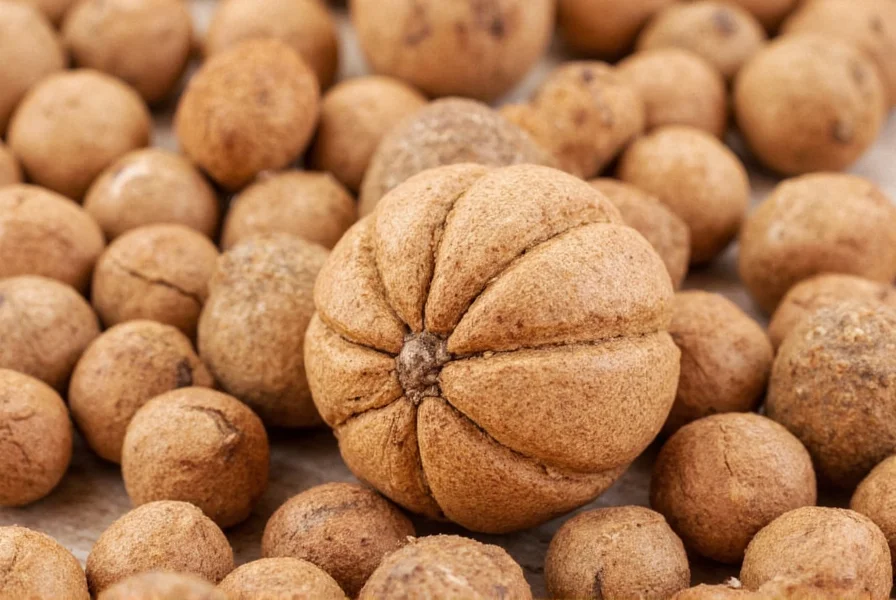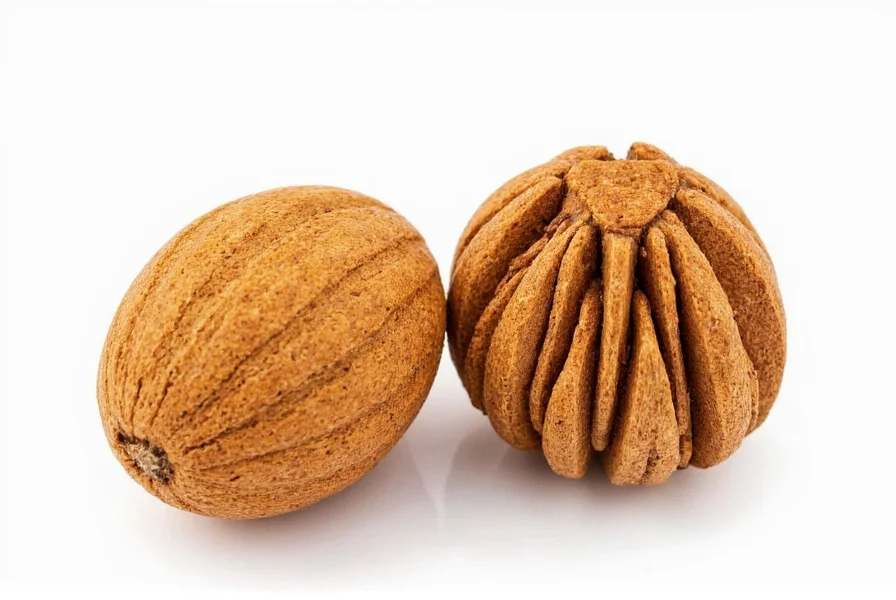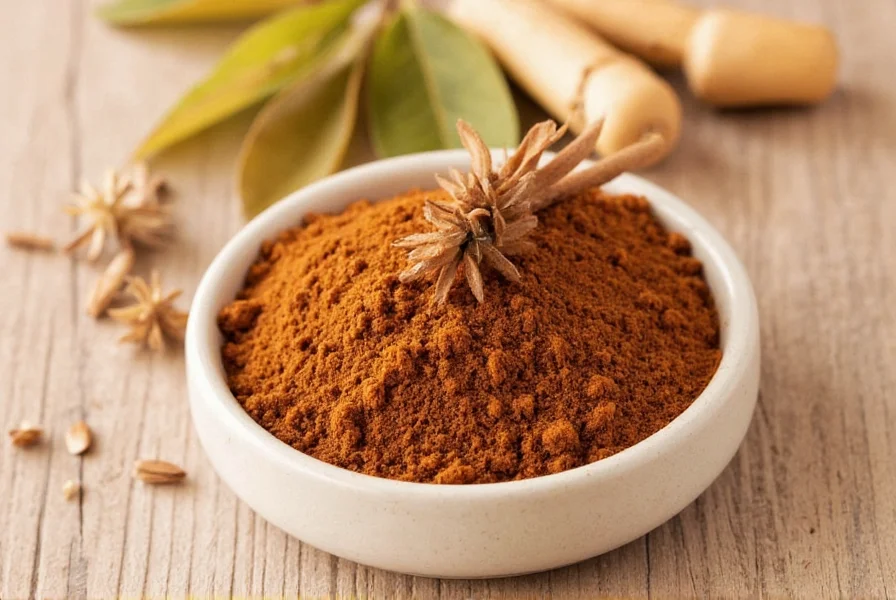Nutmeg has been treasured for centuries not only as a culinary staple but also for its medicinal properties. This small, oval seed produces two distinct spices: nutmeg itself from the inner kernel, and mace from the lacy red aril surrounding it. Understanding how to properly use and store nutmeg spice can significantly elevate your cooking while maximizing its potential health benefits.
Origins and Historical Significance of Nutmeg Spice
The Myristica fragrans tree, which produces nutmeg, is indigenous to the Maluku Islands of Indonesia, historically known as the Spice Islands. For centuries, these islands maintained a monopoly on nutmeg production, making the spice incredibly valuable during medieval times. European powers fought extensively to control these islands due to nutmeg's high demand and limited supply.
Nutmeg traveled along ancient spice routes to Europe, where it became a status symbol among the wealthy. During the 16th and 17th centuries, a single nutmeg could fetch prices equivalent to small fortunes. The Dutch went to extreme lengths to maintain their monopoly, even puncturing spice-laden ships to prevent competitors from acquiring seedlings.
Nutritional Profile and Health Benefits of Nutmeg
Nutmeg contains several beneficial compounds including myristicin, elemicin, and safrole, which contribute to both its flavor profile and potential health effects. Just one teaspoon (2 grams) of ground nutmeg provides:
| Nutrient | Amount per Teaspoon | Percentage of Daily Value |
|---|---|---|
| Calories | 12 | 1% |
| Fat | 0.9g | 1% |
| Fiber | 0.6g | 2% |
| Magnesium | 10mg | 2% |
| Copper | 0.05mg | 5% |
Research suggests that moderate consumption of nutmeg spice health benefits may include improved digestion, reduced inflammation, and potential cognitive enhancement. The spice contains antioxidants that help combat oxidative stress, and traditional medicine systems have used nutmeg for centuries to address various ailments from insomnia to joint pain.
However, it's crucial to note that excessive consumption can be problematic. Nutmeg contains myristicin, which in large quantities (typically more than 2 tablespoons) can cause nutmeg poisoning with symptoms including dizziness, nausea, and hallucinations. Always use nutmeg in culinary amounts for safe consumption.
Culinary Applications of Nutmeg Spice
Nutmeg's warm, slightly sweet flavor makes it incredibly versatile across various cuisines. Professional chefs often prefer freshly grated whole nutmeg over pre-ground versions for superior flavor intensity and aroma. Understanding how to use nutmeg in baking and savory dishes properly can transform ordinary recipes into extraordinary creations.
In Western cuisine, nutmeg commonly enhances:
- Custards, puddings, and eggnog (essential for classic holiday beverages)
- Cheesy dishes like macaroni and cheese or béchamel sauce
- Vegetable preparations, particularly spinach and potatoes
- Meatloaf and sausage mixtures for added depth
Global culinary traditions incorporate nutmeg spice in distinctive ways:
- Indian cuisine uses it in garam masala and various meat curries
- Dutch and Indonesian dishes feature it in stews and rice preparations
- Middle Eastern recipes include it in spice blends for lamb and rice
- Caribbean cuisine incorporates it in jerk seasoning and rum punches

Whole Nutmeg vs. Ground Nutmeg: Key Differences
Understanding the difference between whole nutmeg and ground nutmeg significantly impacts your cooking results. Whole nutmeg maintains its flavor compounds much longer than pre-ground versions, which lose potency rapidly due to oxidation.
| Characteristic | Whole Nutmeg | Ground Nutmeg |
|---|---|---|
| Flavor Intensity | Bright, complex, aromatic | Muted, one-dimensional |
| Shelf Life | 2-3 years when stored properly | 6-12 months |
| Best Used For | Finishing dishes, premium recipes | Quick preparations, baking |
| Grating Method | Microplane or nutmeg grater | Pour directly from container |
For optimal flavor, invest in a small microplane or dedicated nutmeg grater. Store whole nutmeg in an airtight container away from light and heat. When grating, use gentle pressure to produce fine, fluffy shavings rather than coarse chunks that can create bitter pockets in your dish.
Proper Storage Techniques for Nutmeg Spice
Maximizing the shelf life of your nutmeg requires proper storage techniques. Whole nutmeg maintains its essential oils much longer than ground versions. Store whole nutmeg in an airtight glass container in a cool, dark cupboard away from heat sources like your stove. Properly stored, whole nutmeg can retain its potency for 2-3 years.
For ground nutmeg, the clock starts ticking immediately after grinding. If purchasing pre-ground nutmeg, check the packaging date and buy from stores with high turnover. Transfer ground nutmeg to an opaque, airtight container immediately after opening the original packaging. Even with ideal storage conditions, ground nutmeg begins losing flavor within 6 months.

Nutmeg Substitutes and Alternatives
When you find yourself without nutmeg spice, several alternatives can provide similar flavor profiles depending on your recipe. The best nutmeg spice substitute options include:
- Mace: Since mace comes from the same plant, it offers the closest flavor match, though slightly more delicate
- Pumpkin pie spice: Works well in sweet applications (use ¾ teaspoon for every ½ teaspoon of nutmeg)
- Allspice: Provides similar warm notes but with more peppery characteristics
- Cardamom: Offers complexity in savory dishes but has a distinctly different flavor profile
When substituting in baking recipes, remember that nutmeg's unique flavor cannot be perfectly replicated. For the most authentic results in traditional recipes like béchamel sauce or apple pie, seek out whole nutmeg rather than relying on substitutes.
Safety Considerations and Responsible Usage
While nutmeg spice offers numerous benefits when used appropriately, understanding nutmeg spice dosage safety is essential. Culinary amounts (typically ⅛ to ¼ teaspoon per dish) pose no health risks for most people. However, consuming more than 1-2 teaspoons at once can cause adverse effects due to myristicin content.
Potential side effects of excessive nutmeg consumption include:
- Dry mouth and throat
- Nausea and vomiting
- Dizziness and confusion
- Increased heart rate
- In extreme cases, hallucinations or delirium
Pregnant women should avoid consuming nutmeg in medicinal amounts, though culinary usage remains safe. Individuals taking certain medications, particularly antidepressants or sedatives, should consult their healthcare provider before consuming nutmeg in larger quantities.
Conclusion: Maximizing Your Nutmeg Experience
Nutmeg remains one of the most versatile and historically significant spices in global cuisine. By understanding how to select, store, and use nutmeg properly, you can elevate both sweet and savory dishes while potentially benefiting from its nutritional properties. Remember that freshly grated whole nutmeg consistently outperforms pre-ground versions in flavor and aroma.
Whether you're exploring traditional recipes that call for nutmeg in Indian cuisine or experimenting with modern applications, this ancient spice continues to offer remarkable depth and complexity. Approach nutmeg with respect for its potency and history, and it will reward you with culinary experiences that connect you to centuries of global food traditions.
Frequently Asked Questions
What is the difference between nutmeg and mace?
Nutmeg and mace come from the same fruit. Nutmeg is the inner seed kernel, while mace is the lacy red membrane surrounding the seed. Nutmeg has a warmer, sweeter flavor, while mace offers a more delicate, slightly citrusy taste.
How much nutmeg should I use in recipes?
For most recipes, ⅛ to ¼ teaspoon of freshly grated nutmeg per serving provides optimal flavor without overpowering the dish. Remember that whole nutmeg grated fresh is significantly more potent than pre-ground versions.
Can nutmeg go bad?
Whole nutmeg maintains freshness for 2-3 years when stored properly in an airtight container away from light and heat. Ground nutmeg loses potency within 6-12 months. To test freshness, grate a small amount - fresh nutmeg should produce strong aromatic shavings with visible oils.
Is nutmeg safe for children?
Nutmeg is safe for children in normal culinary amounts found in food. However, large doses can cause adverse effects. The American Academy of Pediatrics recommends avoiding medicinal amounts of nutmeg for children under 12.
What are the best dishes to use nutmeg in?
Nutmeg excels in creamy sauces (béchamel), cheese dishes, potato preparations, custards, eggnog, and spice cakes. It also enhances meatloaf, sausage, and certain vegetable dishes like spinach and carrots. In global cuisine, it features prominently in Indian curries, Dutch stews, and Caribbean jerk seasonings.











 浙公网安备
33010002000092号
浙公网安备
33010002000092号 浙B2-20120091-4
浙B2-20120091-4